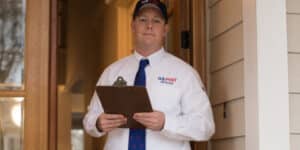There is a wide variety of common bugs in the South, which we group into five categories. U.S. Pest Protection offers pest control services for both residents and businesses alike, and we can prevent infestations and rid your property from these pests and more.
2. occasional invaders
Occasional invaders are common in the South, infesting buildings less often than threat pests. However, they can still cause damage and health risks, especially with changing weather patterns.Beetles, Hornets, Ladybugs, Silverfish, Stink Bugs, Wasps, Weevils

